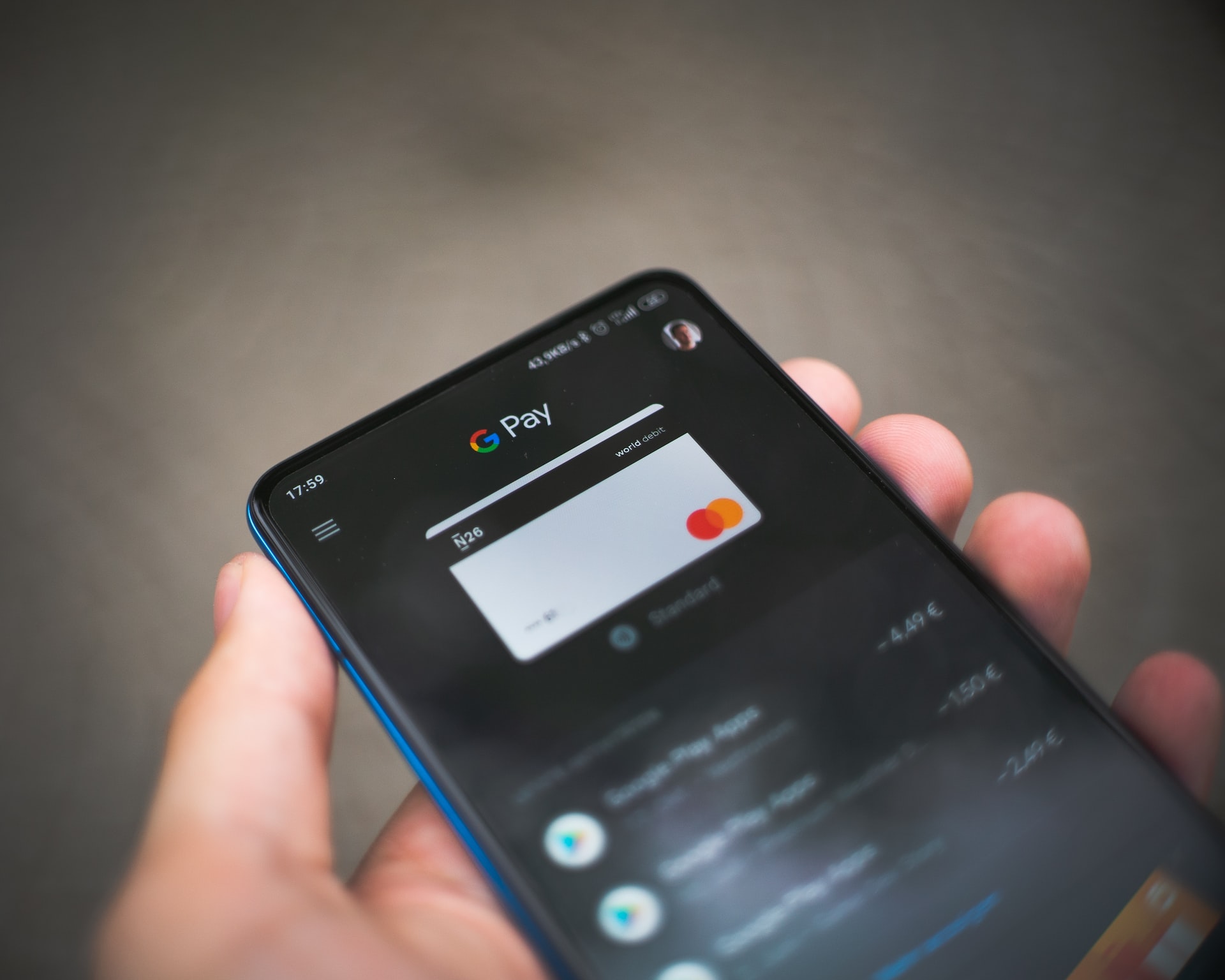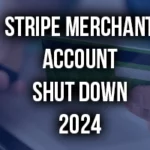It’s been steadily gaining ground on traditional retail sales from brick-and-mortar shops.
And now, it’s easier than ever to accept credit card payments online!
As you might imagine, accepting credit card payments really took off when the coronavirus pandemic and lockdown started.
More people are taking advantage of the convenience online merchants offer.
In fact, since May 2020, online spending has grown more than 76% from the prior year.
As a business owner, you might be seeking to boost your existing operation by adding an eCommerce sales channel.
Or you might be a new business owner who wants to get their start in the massive online marketplace.
Whether you fit in one of those categories or are somewhere else on the spectrum, there is a lot to take into account when you want to accept credit card payments online:
- Do you offer digital goods?
- Retail products?
- Subscription services?
The trick is to find solutions that fit your industry.
You’ll need to find the right shopping cart software and connect it to the best payment processor you can find.
Finding your own creative solution can provide a sense of satisfaction, but at the same time that might not be the best path for your business.
Oftentimes it’s better to roll with an established solution like the ones we’ll present in this article.
And accepting payments online is easy with any of them.
Many companies provide solutions that are good for a wide range of merchants.
At the same time, they also typically provide integrations and add-ons that enable you to tailor the results for your needs.
And of course, if you are part of a high-risk industry, your best move is to engage the services of a merchant account provider like Easy Pay Direct.
We specialize in serving high-risk industries!
It’s worth noting that Instagram and Facebook do not allow you to sell digital products on their platforms. So if you want to market anything that’s primarily downloadable, you’ll have to find a different way to do it.
On the other hand, if all you want is a simple way to bill customers or clients, electronic invoicing might be the way to go.
And you can accomplish this without a website!
So in this article, we’ll talk about how to accept credit card payments over the Internet.
We’ll also talk about the various ways you can have your customers pay you, including a few that do not require you to have a business website.
We’ll offer several choices for merchant services providers so you can get up and rolling with online payments in a way that’s fast, easy, and at the best price.
Finally, we’ll talk about a few major considerations you might address before picking the provider that’s the best fit for your business.
Ready? Let’s dive in!
Top Picks for Merchant Account Service Providers
Here’s some basic data on a few different premier merchant account service providers.
Pick 1: Stripe
Stripe offers:
- No long-standing contracts
- Flat-rate pricing
- ACH Processing
- Debit and Credit Card Processing
- Foreign Currency Support
- Comprehensive Support for International Transactions
Pick 2: Easy Pay Direct
Easy Pay Direct offers:
- Specializes in working with high risk business owners
- Highest approval rate in the industry
- Human help that’s easy to get
- Fully PCI compliant; EPD audits PCI compliance every quarter
- Patent pending Load Balancing Technology for use with multiple merchant accounts
- Low monthly fees and no minimum monthly requirements
Pick 3: Square
Square offers:
- Integrated Website Builder
- Accepts Debit and Credit Card Payments
- Inventory Management Tools
- Enhanced Security Features
- No monthly fees for basic accounts
- Both Paid and Free Pricing Plans
Pick 4: Wave
Wave offers:
- Integrated with Wave’s Online Accounting Package
- Online Invoicing
- Fast and Simple Account Setup
- Accepts Debit, Credit, and ACH payments
- Mobile apps for Android and iOS
- Pay-as-you-Go Billing
Pick 5: PayPal
PayPal offers:
- Payments Enabled Through Online Invoicing as well as Debit Cards, Credit Cards, and ACH payments
- No long-term contracts or early termination fees
- No Monthly Fees
- Flat-Rate Pricing Structure on basic accounts
- Cohesive Payment System with Many Custom Options
Pick 6: PaySimple
PaySimple offers:
- Full-Service Merchant Account Provider
- Payments Enabled Through Debit Card, Credit Card, or ACH
- Simple Online Invoicing
- Online Storefront can be Used on Your Website
- Customer Database access and Repeating Billing available for no additional cost
Pick 7: QuickBooks Payments
QuickBooks Payments offers:
- Integration with well-respected QuickBooks accounting software
- Accepts online transactions of all types: Debit Card, Credit Card, and ACH
- Works with Many Principal Third-Party Shopping Carts
- No early termination fees or long-term contracts
- No monthly fees, pay-as-you-go plans are available
Pick 8: PaymentCloud
PaymentCloud offers:
- Many High Risk Industries Supported
- Full-Service Merchant Account Provider
- Customer Support Provided Through Dedicated Account Managers
- Integrated with many Shopping Cart and Content Management Systems
- Virtual, Wireless, and POS Terminals available
Pick 9: Shopify Payments
Shopify Payments offers:
- Integrated Website Builder Tools along with Payment Processing
- Included Web Hosting Services, also SEO/Marketing Services
- Shipping Services also Included
- No Long-Term Contracts; Month-to-Month Billing Available
Read about why we made these particular picks below.
Accepting Credit Card Payments Online: Choices for Small Businesses
Want to accept credit card payments online?
Great!
Before you start getting money coming in, you have to start at least one online payment stream.
Six established ways for taking credit and debit cards online are:
- Shopping Cart Programs (ex: Shopify, Magento, Wix)
- Third-Party Extensions and Applications (Clover, Plastiq, Woocommerce)
- Internet Invoicing Software (Paypal, Wave, Zoho)
- Social Media Platforms (Facebook, Instagram)
- Cloud-Based Payment Pages (PayPal, NvoicePay, PaySimple)
- Payment Buttons (Square, PayPal, Checkify)
Taking Payments on Your Website
Do you already have a website to sell your products or services online?
If so, great!
Having a website is a large part of selling online, at least for most businesses.
However, if you don’t have a website, or don’t want to go through the trouble of making one, there are some other choices in the next section.
If you already have a website, do you like it? Does it work well for you already? Does your website make it easy to accept credit cards online?
Whether you have a website or are starting from scratch, there are many ways to start accepting payments.
It’s easy to put in some payment buttons that link a customer to hosted websites (like PayPal) that will take care of accepting payments for them.
These sorts of solutions will direct your customers to a payment page hosted by the processor when it comes time to check out.
This is a process that many Internet users are already familiar with, as companies like PayPal have done it for a long time.
There are also many extensions and plug-ins that will support accepting credit cards online.
And if you don’t like your website and want to start from the beginning again, many companies like Wix and Shopify offer top-notch website building tools that support most of the payment options below — if not all of them.
Using Third-Party Apps to Sell from Your Website (existing or new)
It’s really easy to implement payments online with a Content Management System or website builder like Weebly, WordPress, or Wix.
All you have to do is take a look at the site-builder’s integrated extensions, plug-ins, and third-party applications.
You shouldn’t need much technical expertise to get any of these choices working for you.
If you have a site that you already love, this is one of the easiest ways to start accepting online payments.
And it’s worth noting that no matter what apps you use to sell from your website, Easy Pay Direct works with them, 100%
The Hosted Payment Page
One of the easiest ways to accept credit cards on a website is by using a hosted payment page.
This feature redirects customers to a secure checkout page hosted by your processor when they need to enter their payment information.
If you’ve ever used PayPal to make an online payment and had to hop over to PayPal’s website to check out, you’ve used a hosted payment page.
Hosted payment pages are very easy to integrate into your website, usually only requiring a few lines of preformatted code that you can cut and paste into your site.
By momentarily directing customers off your site to check out, you’ll eliminate the hassle of having to secure and encrypt your server to meet PCI compliance requirements.
Sensitive credit card data will also never be stored on your server, dramatically reducing the chance of a data breach.
Payment Buttons That Sell Online
One more way to enable payments on an already existing website is with a payment processor that also offers payment buttons.
Shopify, for instance, offers an array of packages.
Their most inexpensive option, known as Shopify Lite, offers the ability to use payment buttons.
This plan will also grant you a way to sell on Facebook, which we’ll talk about in the next section. And it will give you access to mPOS, Shopify’s point-of-sale and inventory management solution.
Integrate Your Website with Shopping Cart Software
Using the above solutions, adding payment capability to a new or existing website can necessitate just a little work — and be incredibly convenient, to boot.
However, these methods often do not offer as many tools and options as you will get with an eCommerce-hosted software solution.
That said, one of the best choices is to use Shopping Cart Software.
This is a great solution for anyone, whether you want to integrate it into an existing website, or even if you’re starting a new website from scratch.
The term “shopping cart” no longer refers only to the buggies you see at the grocery store.
Nowadays, shopping carts are fully functional eCommerce software applications.
They provide an all-in-one, hosted entry into the world of eCommerce.
Any eCommerce business will need to make some choices: What platform to use and what domain name, to mention a few.
You will also need to pay for the web host to serve your website for the Internet at large.
Shopping carts often offer everything you might need under a single umbrella: Hosting, online product management and sales, and even a way to buy a fitting domain name directly.
More advanced shopping carts will also enable you to centralize your control of sales, no matter how many different channels you use.
If you sell on eBay, on social media, or some other channels, they will enable you to organize all your fulfillment of orders using a single platform.
This may include discounted-rate postage and even printing of your shipping labels!
There are also a few shopping carts that give you integrations with different marketing platforms, marketing tools, and also let you work with point-of-sale systems.
If a shopping cart you happen to like doesn’t offer every single feature you might want, it’s worth it to search through different app markets to find the integrations and extensions you might need.
Different shopping carts will have different natively-provided features, as well as a different range of add-ons for each one.
What if you don’t have a website, though? Isn’t that a problem?
Read on to learn about some solutions for accepting payments that don’t require a website.
No Website? Not an Issue!
Many people think that taking payments online begins with having a website to conduct business on.
They are correct in thinking this is a common occurrence.
Websites are not the only way to take payments!
There are a few different ways that enable you to accept credit cards online without needing a website.
Online Invoicing
Before the days of eCommerce, invoicing was done with little slips of paper sent through the mail.
Nowadays, though, invoicing and accounting software is cloud-based, meaning you can access it anywhere, no matter what device you have at hand.
Also, most modern invoices have links or buttons embedded in them, which enable a customer to pay directly from the invoice.
All your customers will have to do is follow the link, enter their payment details, and voila! You get paid shortly thereafter.
Wave provides an online invoicing service that’s integrated with their accounting software.
PayPal and Zoho Apps also offer online invoicing capabilities.
Selling on Social Media
Social Media is no longer just a place to share status updates and pictures of your dog.
Now you can sell your wares on Facebook, create an online shop on Instagram, and even create pins that you can buy on Pinterest!
If you want to sell through social media, Shopify is a very good way to accomplish just that.
At its core, Shopify is an online shopping cart. They have a “Shopify Lite” plan that gives you access to their mPOS application and “Buy” buttons you can put on your website.
They also give you a store to use on Facebook, that includes lots of tools to ensure the process is easy for you.
How Much Will it Cost to Start Accepting Credit Cards?
This is a question commonly asked by people starting to accept payment cards online.
Unfortunately, the answer isn’t exactly simple.
Although many payment service providers offer their services for “free,” that just means there isn’t always an up-front cost associated with these companies.
They have to make money somehow, though, and they typically do so by assessing a fee on each transaction they process.
The fee assessed typically varies due to the method the payment card is accepted, and the pricing plan you’re using.
The three main models used for assessing these fees are flat-rate, tiered pricing, and interchange-plus.
The Cost of Accepting Payment Cards: Flat-Rate Pricing
Flat-rate pricing is common with payment facilitators and aggregators like PayPal, Square, and Stripe.
It refers to the fixed rates assessed on each different type of transaction.
For instance, PayPal charges 2.9% + 30¢ for online transactions. If the card is used at a retail location (a card-present situation), they will charge 2.7%.
And if a customer’s card information is taken over the phone and keyed in later, they will charge each transaction made in this way 3.5% + 15¢.
Easy Pay Direct’s rates start at 2.5% + 25¢ per transaction. This rate will vary with the volume that you want to process.
The reason the rates are elevated for certain situations is the increased likelihood of fraud.
However, when using flat-rate pricing, there are typically no long-term contracts or additional fees. This makes it a good choice for any business that processes less than $3,000 a month.
The Cost of Accepting Payment Cards: Tiered Pricing
The tiered pricing model uses three different types of transactions:
- Non-qualified
- Mid-qualified
- Qualified
Non-qualified transactions are the most expensive type.
This includes card-not-present transactions, such as those made online or when a customer provides their payment details to you over the phone, and you key them in later.
Slightly less expensive are the mid-qualified transactions, which usually applies to rewards-type cards that are physically swiped.
The most inexpensive rates in the tiered pricing model are found in the qualified transactions tier. These apply when a payment card is physically used at a terminal.
Tiered pricing is best used when there is a wide range of situations in which payments must be accepted — for instance, when your business has a brick-and-mortar presence, and also wants to operate online.
The Cost of Accepting Payment Cards: Interchange-Plus Pricing
Merchants are required to pay a fee along with each payment card transaction. This is known as the Interchange fee.
This fee varies on the industry, the payment card itself, how the card is presented.
Financial organizations assess this fee because they take on the risk of providing money for merchants, as well as taking care of the charges and fees inherent in processing payment transactions.
Interchange-plus is widely regarded as the most transparent model in use today.
The Interchange rate is set on an annual basis by large credit card companies (such as Mastercard, Visa, and American Express), and revised every so often.
Some of these companies revise the rate semiannually, typically in April and then again in October.
The “Plus” part comes in when the payment processor adds its markup fee.
In this model, the markup is how the processor makes their money. Typically, this rate is negotiable.
Interchange pricing varies per the processor used. So it’s important to look at the synopsis of all fees and pricing, then examine your contract closely before signing.
It’s also important to note that credit card processors using the tiered and interchange-plus pricing models typically also charge more fees under the umbrella of “Account Maintenance.”
These can include various network fees, as well as a PCI Compliance fee, payment gateway fees, as well as a basic monthly fee.
You may also be required to meet certain monthly minimums in order to keep your account in good standing.
Questions All Merchants Should Ask Their Payment Providers
Here are a few crucial questions it’s important to ask your payment processing provider before you engage with their services.
What Monthly Fees do You Charge?
This might seem like a simple question with an easy answer.
Many processors will quote you a small fee, but it’s crucial to dig a little deeper.
Additional fees can be buried deep within the fine print of a contract.
Some companies charge fees for fund transfers to your bank account, statement fees, or batch processing fees.
An unscrupulous processor can “waive” these fees in order to rope you in, only to slip them back in when the “promotional period” passes.
Easy Pay Direct’s monthly fees start low, at $29.99 a month.
How Do You Handle Customer Service?
It’s inevitable that your payments will hit a snag somewhere.
When they do, is your processor going to get you back up and running as quickly as possible, or are they going to leave you out to dry with an automated phone “help” system?
Getting help from a live person isn’t the same thing as an integrated voice response system or even a comprehensive self-help area.
It’s crucial to find out if they have live customer support or not. Easy Pay Direct does, and it’s easy to get!
It’s great to get a low rate on your processing fees, but that advantage pales if you can’t get the help you need when you need it the most.
Are All Relevant Charges Made in the Same Month, or Do You Charge “Billbacks”?
It’s pretty common for a payment processor to attract customers with low rates.
Sometimes, though, that great rate applies only to particular types of cards.
You might find out too late that many of the transactions made in a particular month happened to not qualify for that low rate.
For instance, in February you might think you’re getting a terrific 1.9% rate on all your payment card transactions. In that time frame, you also processed a few rewards cards.
Come March, you might find that your processor has charged you retroactively or billed you back at a higher rate because you accepted those rewards cards — even though you did that last month.
The problem comes when you realize you now have two different rates on two separate statements — all for the same transactions.
This makes it much more difficult to sort out the actual rate you’re being assessed for these transactions.
Do Different Types of Cards Incur Different Rates and Fees?
The fees a payment card service charges to process different types of transactions can vary along with the service, and also for differing amounts of transactions.
For instance, personal payment cards can have a different rate than a business card.
Debit and rewards cards also often have different rates.
It’s important to know precisely what you’ll pay to have each type of transaction processed.
Do I Get the Initial Fees Back When I Refund a Transaction?
It’s easy to lose money when a customer returns a product.
This is because many payment card processors will keep all fees charged to transactions, even if the item is returned.
It’s also quite likely you will be assessed another fee in order to process the refund.
Make sure you understand how the payment card processor’s process works because it will have a direct bearing on the merchant’s return policy.
It’s possible for the merchant to offset this fee by providing “store credit” for a returning item, as opposed to a true refund.
What are the Terms of the Contract? What About Fees for Early Termination?
When you enter into a contract with a payment card processor, you’re typically subject to it for some fixed amount of time.
Most contracts run for at least one year, if not two.
Fees for early cancellation or termination are often part of these contracts.
In case you’re displeased with how your account is being handled, these conditions can make it hard to switch processors in mid-stream.
How Many Transactions Can I Process? Is There a Limit?
At least at first, most processors will limit the number (or amount) of transactions you can process with them.
This can get troublesome if your business has a busy season, or if it grows quickly.
If you end up having to turn down orders because you can’t process them, this will have a negative impact on your operation.
Do Your Rates Vary According to How the Payment is Presented?
Payment card processors typically charge different rates, depending on how a payment is processed.
This is due to the greater risk of fraud inherent in certain types of transactions.
Cards that are physically presented at a terminal or POS device have less fraud associated with them, so they are charged a lower rate.
On the other hand, if someone gives you their card number to make a purchase over the phone, and you key it in later — there is a greater chance of fraud, so the processing fees go up.
Purchases made online have a higher incidence of fraud than do card-present transactions.
Processors offset their risk by assessing a higher rate.
It’s important to know what the rates are. Then you can determine how much of each kind of processing you’ll do.
That will give you a rough estimate of the overall rate you’ll be charged.
What are Your Minimum Monthly Processing Requirements?
Sometimes a payment service provider will require a certain monthly minimum dollar amount of transactions.
They will charge you a fee if your transaction volume doesn’t meet or exceed that minimum amount.
Though not an issue for a larger organization, this fee can cause financial problems for an early-stage business that processes only a few payment card transactions in a month.
Do You Charge a Separate Gateway Fee?
It’s a fairly normal thing for a payment service provider to charge a separate fee for you to use their payment gateway.
This is usually done on a per-transaction basis.
Typically you will pay a “gateway fee” on each transaction, in addition to the standard transaction fee.










